Volunteers are an absolutely essential component to an animal shelter’s success. Just ask any shelter director, veterinarian, or staffer. They will tell you that it would be impossible to keep up with the shelter’s demands without the help of dedicated and big-hearted volunteers. It takes a whole lotta love and hard work to keep homeless dogs safe, healthy, and happy while waiting to go home with a forever family.
Children stand to benefit in immeasurable and innumerable ways through volunteer work. It fosters empathy, teaches responsibility, and allows kids to build social and working skills that they will take into every classroom and job they enter throughout their lives. There are plenty of ways that shelters can put smaller hands to work. Today we will share 9 ways your kids can volunteer at shelters along with some practical tips to keep everyone safe and happy while doing it.
(Note: Every shelter has their own volunteer policies. Call your local shelter to ask about age requirements.)
#1 – Give a Shelter Dog Attention and Love
The most important and immensely rewarding gift a child can give to a homeless dog is love. Dogs end up in shelters for a wide variety of reasons. Some of them end up in shelters because their humans cannot care for them anymore. Others end up there because their humans never cared. Still others end up needing to be sheltered because something unexpected happened.
That was the case with Tye. He is residing at the Humane Society of St. Joseph County, where my family volunteers. He was a member of a large and loving family but when his human passed away, a former service dog trainer, all twelve of the orphaned dogs had to be taken into the shelter. Imagine going from living with a family, surrounded by those you love to being in a new place all alone.
Tye, and all the dogs in shelters, need love. They need as much human touch and interaction as they can get. Children can deliver affection and attention to dogs in need, helping them feel more safe and secure in an unfamiliar and frightening situation. And the best part? Kids will enjoy giving the love and affection just as much as the dogs will enjoy getting it.
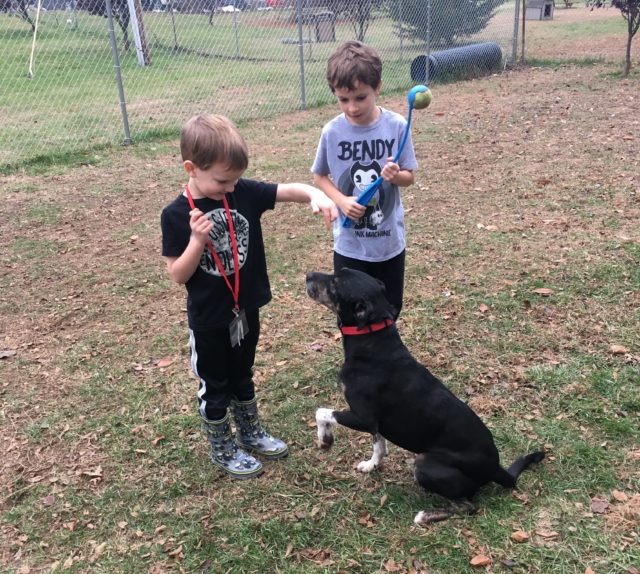
#2 – Take a Shelter Dog on a Walk
As much as the dedicated staffers at shelters would love to be able to take each dog out for a satisfying and invigorating walk each day, it is just not possible. This is an area where volunteers can really step up and make a big difference in the daily lives of sheltered dogs. Even a short walk allows a shelter dog to get outside, smell all the exciting and engaging scents around the property, and get some exercise. Just the opportunity for a dog to be able to do their business outside is hugely satisfying and important.
Our local shelter has a fairly large outdoor area where dogs can be walked. Depending on the location, some shelters allow volunteers to take dogs off property for longer walks. Check with your local shelter’s director to see what is and isn’t allowed.
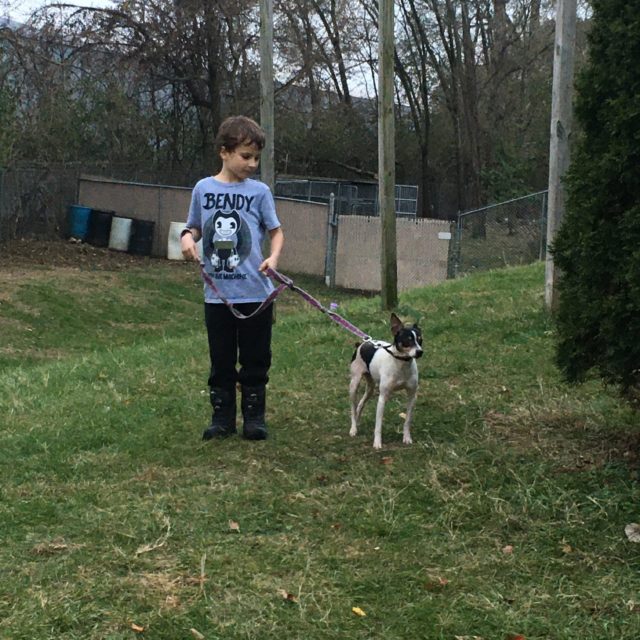
#3 – Practice Commands
When dogs are able to perform basic commands, such as sit, it really improves their chances of getting adopted. When they meet potential adopters, they can put their best paw forward by showing off what good manners they already have. It also shows potential adopters how smart they are and that they are responsive to training. Kids learn valuable lessons in tenacity, positive reinforcement, and consistency when command training.

#4 – Help Stuff Kongs or Make Other Treats
My boys love to help out in the kitchen. If they can get a little messy and lick their fingers in the process, they are all the more excited to get involved. Kids can get their kitchen fix making treats for local shelter dogs. To keep dogs active and engaged, shelters keep treat puzzles on hand for the dogs. A bored shelter dog will find plenty of entertainment in licking a frozen peanut butter-stuffed Kong. It’s an easy and fun way for your kids to contribute.

#5 – Read to Dogs
Ingham County Animal Control recently launched a new program that recruits community kids to read books to shelter dogs. They call the program S.P.A.C.E. Tails. Kids ages 6-16 can sign up for designated times lots to come read to shelter dogs. The shelter says of the program, “The shelter environment can be overwhelming for many pets, we have found reading to our residents reduces anxiety and creates a calming environment.” If your kiddo loves to read and loves dogs, this could be a great way to volunteer at your local shelter.
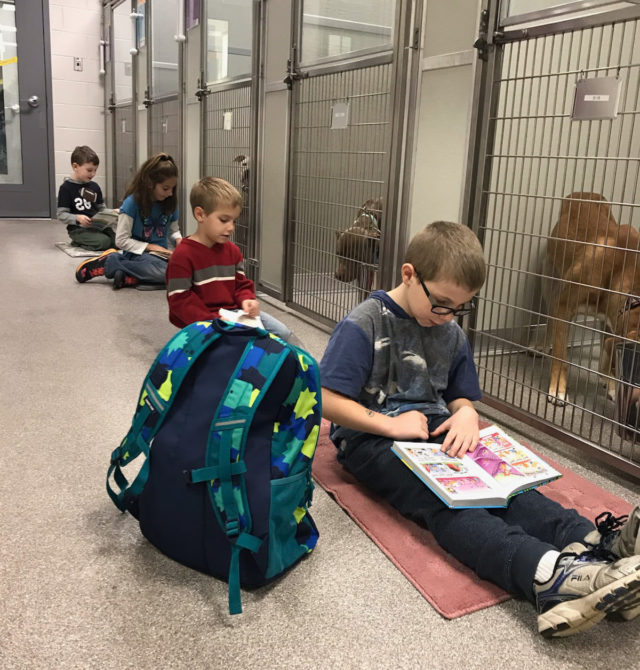
#6 – Play with a Shelter Dog
On top of loving up shelter pups from head to toe and taking them outside for a leashed walk, shelter dogs greatly benefit from some off-leash play sessions in or outside. Many shelters have meet and greet rooms and outdoor dog runs that can be used by volunteers to let a dog off leash and loose for some good old fashioned play time. Throw a tennis ball, squeeze a squeaky toy, or play a loud of keep away. Whatever games your kids like to play with pups, let them have it with a willing and excited shelter dog participant.
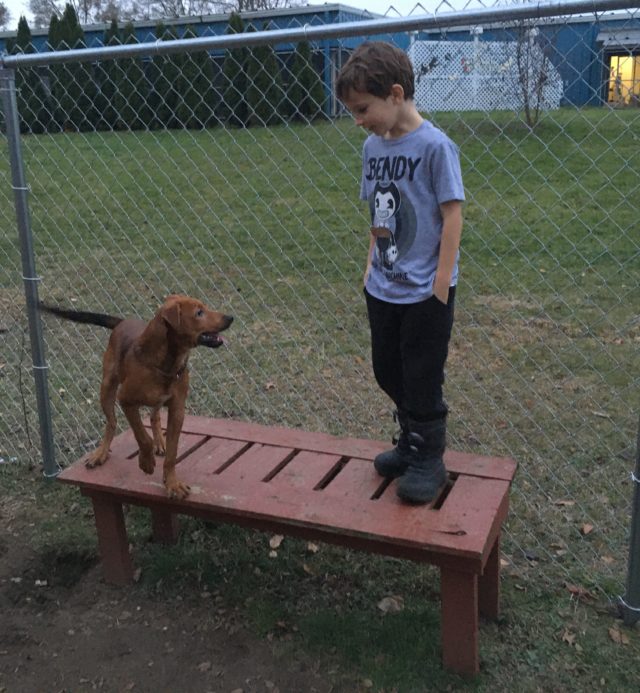
#7 – Bathing and Brushing Shelter Dogs
To help shelter dogs look and feel their best, you and your kids can spend time bathing and grooming them. The human interaction that happens with grooming can be helpful in and of itself. Being touched and paid attention to makes shelter dogs feel more at ease. Beatifying shelter dogs can help make them look and feel more attractive to potential adopters, too. Ask your local shelter if there are certain days or times of the month when it would most benefit the dogs to get a bath and brush. Is there a big adoption event coming up? Get those puppers ready for their big day with some primping and pampering.
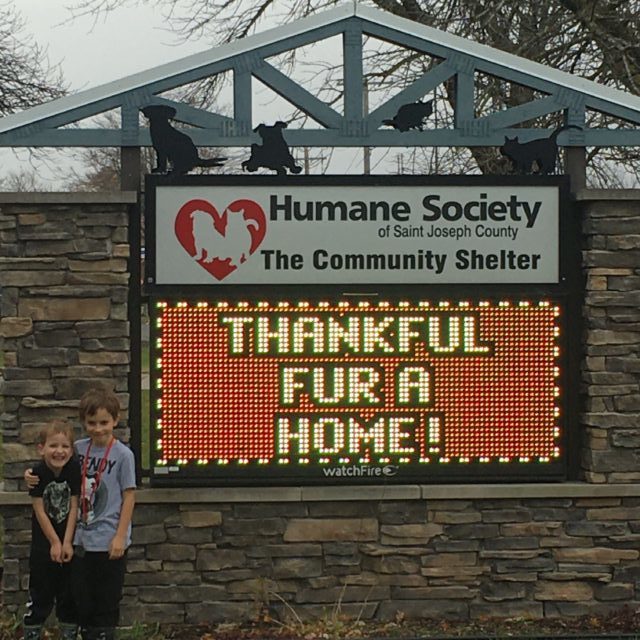
Tips for Successful Junior Volunteering
Shelters welcome helping hands of all sizes. Genny Carlson-Brown is the Executive Director of the Humane Society of St. Joseph County. She told iHeartDogs, “I love when children come to volunteer at the shelter. I grew up on a farm surrounded by animals but here in our urban area, those opportunties don’t happen so often for our youth. Not only do they learn basic animal handling and how to care for the pets, junior volunteers learn compassion for the animals and really come away with a sense of accomplishment after volunteering. They gain confidence and learn all while giving back. It’s truly a win win.”
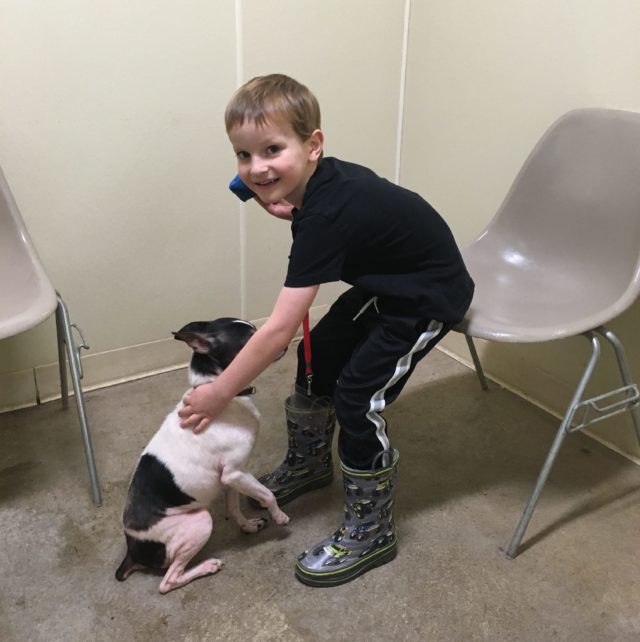
Naturally, there are some tips you should bear in mind as you serve with your kids at an animal shelter. The prime concern is safety for the dogs and children alike. Some of the guidelines we learned during our volunteer orientation include:
- Kids must be supervised by their parent or guardian at all times.
- Kids should wait outside of the kennel while the adult gets the dog leashed.
- Adults should be the only ones opening and closing doors. This avoids any animals getting loose or any fingers getting smashed.
- Exercise common sense with leash walking. If your kid weighs 35 pounds, let them walk small and medium dogs but leave the big dogs to an adult. It’s also a good idea to take the lead when encountering another dog or human.
Approximately 3 million dogs enter shelters in the US every single year. That’s 3 million bellies that could use a good rub. 3 million backs that could use a good scratch. 3 million pets looking for a forever home. You and your kids can make a difference for the shelter dogs near you. Check out your local shelter and find out all the good that you and yours can do.
 Toledo, United States.
Toledo, United States.
